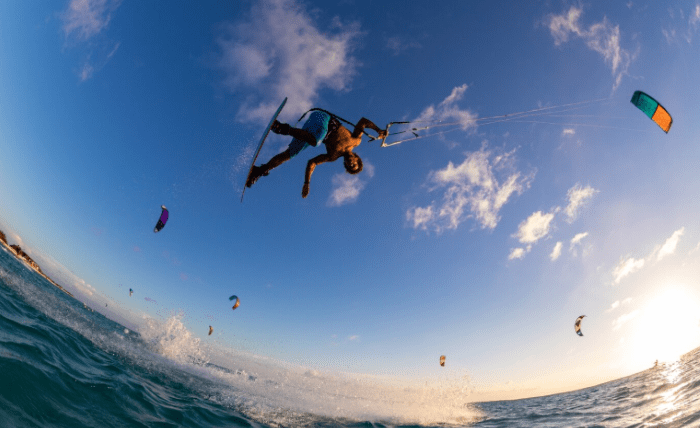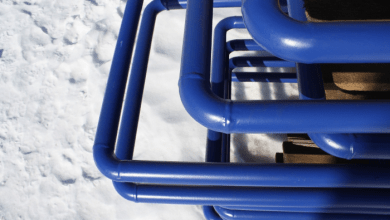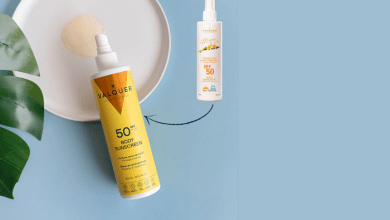
If you’re looking for a sport that combines the thrill of surfing, the artistry of paragliding, and the power of the wind, kite surfing (also called kiteboarding) is it. Few activities can match the feeling of being lifted by the wind while gliding across the water at high speed. Part sport, part lifestyle, kite surfing has exploded in popularity in recent years, attracting thrill-seekers and water lovers from every corner of the globe.
What is Kite Surfing?
Kite surfing is a water sport that uses a large, controllable kite to harness wind power and propel a rider across the surface of the water on a small board. Riders can cruise at speed, jump high into the air, and even perform tricks mid-flight. Unlike traditional surfing, which depends on catching waves, kite surfers can enjoy flat-water lagoons, open seas, and even lakes—as long as there’s wind.
This versatility has made kite surfing accessible in a wide range of locations, from tropical beaches to mountain reservoirs.
The Appeal of Kite Surfing
The excitement of kite surfing comes from the combination of speed, height, and freedom. One moment, you’re skimming across the surface of the water, and the next, you’re soaring through the air—sometimes up to 30 feet high!
Beyond the adrenaline, kite surfing is a deeply immersive way to connect with nature. The sport teaches you to read the wind, understand currents, and adapt quickly to changing conditions. And because you can ride on flat water as well as waves, you’re not restricted by tides or swell conditions, making the sport more flexible than traditional surfing.
The Gear You Need
One of the biggest barriers for newcomers is the gear. While it might look complicated at first glance, kite surfing equipment is straightforward once you understand the basics.
- Kite: Inflatable or foil-style kites come in various sizes, chosen based on wind strength and rider weight.
- Control Bar: This is how you steer the kite. Lines connect the bar to the kite, allowing you to control direction and power.
- Board: Twin-tip boards are most common for beginners, while directional surf-style boards are used by advanced riders.
- Harness: This attaches you to the control bar so you don’t have to hold the kite’s pull with your arms alone.
- Safety Gear: A helmet, impact vest, and leash system are recommended for safe riding.
Many beginners choose to rent gear at first, as it can be expensive to buy outright. Once you’re hooked, investing in your own equipment gives you the flexibility to ride whenever conditions are right.
Learning to Kite Surf
Because of the power of the wind and the technical nature of the sport, proper instruction is essential. Most kite surfing schools offer multi-day lessons that teach everything from wind theory and safety systems to launching, riding, and self-rescue techniques.
The typical learning progression includes:
- Kite Control on Land: Before touching the water, you’ll practice steering and controlling the kite on a beach.
- Body Dragging: Once in the water, you’ll learn how to use the kite to pull your body through the water without the board.
- Water Starts: This is when you combine kite control and board skills to get up and ride.
- Riding and Transitions: After you can ride in both directions, you’ll learn to turn smoothly and control your speed.
Patience is key—the sport has a learning curve, but once you master the fundamentals, progression comes quickly.
Fitness Benefits
Kite surfing is a full-body workout disguised as play. It strengthens your core, legs, and upper body while improving balance and coordination. The constant movement keeps your heart rate elevated, making it a fantastic cardio workout.
Mentally, the sport is just as rewarding. Being out on the water and fully focused on wind and waves can be meditative, reducing stress and improving mood. The feeling of accomplishment after landing your first jump or riding upwind is unmatched.
Best Locations Around the World
Kite surfing has become a global sport, with incredible destinations on nearly every continent. Some of the top spots include:
- Tarifa, Spain – Known as the “Kite Surfing Capital of Europe,” Tarifa boasts strong winds year-round.
- Maui, Hawaii – Home to the legendary Kite Beach, it’s a paradise for advanced riders.
- Cape Town, South Africa – Famous for big air and stunning backdrops.
- Cabarete, Dominican Republic – A friendly spot for beginners and pros alike.
- Boracay, Philippines – Calm waters and reliable winds make it ideal for learning.
Local lakes and coastal areas also offer opportunities, so you don’t have to travel across the globe to start.
Safety First
Kite surfing is exhilarating, but it’s not without risks. Strong winds, powerful kites, and water conditions require respect and preparation. Always check the weather forecast before heading out and avoid offshore winds, which can carry you away from shore.
Learning from certified instructors, using proper safety gear, and practicing self-rescue techniques are non-negotiables. Never kite alone and make sure others on the water are aware of your presence.
A Lifestyle, Not Just a Sport
Many people who try kite surfing quickly realize it’s more than just a hobby. The sport attracts a vibrant, supportive community that shares a love of wind, water, and adventure. Riders often travel together to chase the best conditions, and kite surfing events and competitions bring enthusiasts from around the world together.
Beyond that, it’s a sustainable way to enjoy nature. Kite surfers rely solely on the wind for power, making it an eco-friendly sport that leaves little environmental footprint.
Final Thoughts
Kite surfing is the perfect blend of excitement, fitness, and freedom. It challenges you physically and mentally, rewards you with incredible experiences, and connects you with a passionate community. Whether you’re cruising across a flat-water lagoon or launching off waves in the open ocean, the sensation is addictive.
If you’re ready for a sport that pushes your limits and immerses you in nature, grab a kite, harness the wind, and experience kite surfing for yourself. Once you start, you’ll wonder why you didn’t try it sooner.



